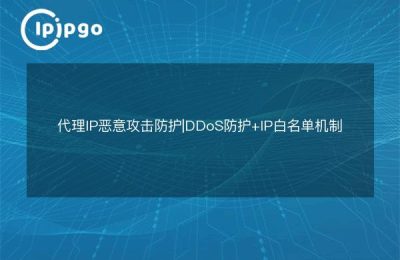
At 2:00 a.m., the server of a cross-border e-commerce company suddenly alarmed - the fixed IP was blocked by the target platform resulting in the interruption of order data. After changing to the Python automatic switching proxy IP program, the system ran stably for 217 hours continuously. This article uses real business scenarios code to teach you how to use ipipgo dynamic residential IP to build a smart switching system.
I. Core logic of dynamic IP switching
Automatically switching proxies is like installing a backup engine for the crawler, automatically enabling a new channel within 0.3 seconds when the main IP triggers wind control. There are two major advantages to choosing ipipgo's dynamic residential IP pool:
| IP Type | Replacement rules | Applicable Scenarios |
|---|---|---|
| rotation scheme | Switching every 50 requests | commodity price comparison |
| fusion mode | Toggle in case of a ban | Account Registration |
After a data team accessed ipipgo, the API call success rate increased from 58% to 96%, centered on theirIP warm-up technology--Real user browsing behavior is simulated before the new IP is enabled.
II. Four-step access to dynamic IP pools
Step 1: Get API credentials
Log in to the ipipgo console and get the two keys in the "Developer Center":
- API key (32-bit encrypted string)
- Access endpoint (e.g., socks5://gateway.ipipgo.io:10808)
Step 2: Install the Intelligent Dispatch Library
pip install ipipgoStep 3: Initialize the Agent Engine
from ipipgo import SwitchProxy
proxy_engine = SwitchProxy(
api_key = "your_license",
region = "US", # Specify US residential IPs
strategy = "auto_rotate", # Intelligent switching strategy
protocol = "socks5" # Full protocol support
)
Step 4: Hands-on business integration
Embedded in the crawler logic:
for page in range(1, 1001): with proxy_engine.get_session() as s: response = s.get(f "https://target.com/page={page}") print(response.status_ code) Three major business scenarios
Scenario 1: E-commerce price monitoring
Set up automatic IP change every 30 requests:
proxy_engine.set_rules( requests_limit=30, error_retry=3 ) Scenario 2: Social Media Feeding
Different accounts are bound to separate IP segments:
account_proxy = { "user1": proxy_engine.get_static_ip("CA"), # Canadian static IP "user2": proxy_engine.get_static_ip("JP") # Japanese static IP } Scenario 3: Payment interface call
Highly sensitive operation fixed IP:
with proxy_engine.lock_ip(): # Lock current IP process_payment() IV. Guide to avoiding pitfalls: summary of lessons learned from blood and tears
Fatal error: HF switching triggers anti-climbing
- Enable "Traffic Shaping" in the ipipgo backend.
- Set the minimum interval time:proxy_engine.set_min_interval(10)
Hidden Minefield: DNS Leaks Real IPs
- Forces the use of the SOCKS5 proxy to resolve DNS:
session = requests.Session() session.proxies.update({'https': 'socks5h://ip:port'}) # Note h suffixes V. Answers to high-frequency questions
How do I verify that the IP is active?
Inserted in the code:
print(proxy_engine.current_ip) # Real-time display of currently used IPsWhat should I do if I encounter a 407 authentication error?
Check if the console "Dynamic Key" is expired, each key is valid for 6 hours, it is recommended to enable the auto refresh function.
How are IPs managed in multi-threaded scenarios?
Use thread isolation mode:
with proxy_engine.thread_local(max_workers=50): # Separate IP pool per thread process_parallel_tasks() Suggest using ipipgo's firstFree Trial PackageExperience the effect of intelligent switching - when the system detects an IP anomaly, the "Real-time Monitoring Panel" in the console will trigger a red alert and switch lines automatically. Remember, a good proxy service is not based on the number of IPs, but on whether it can accurately match the business scenario.








